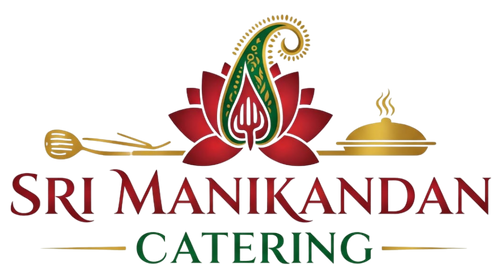S.K. புத்தூர், மடத்துக்குளம் வட்டம், திருப்பூர் மாவட்டம். கிழக்கு நீலம்பூர்.
Sweet Traditions: The Heart of Every Tamil Nadu Celebration
Introduction
In Tamil culture, no celebration is complete without sweets. From weddings and baby showers to housewarmings and temple festivals, sweets play a divine and emotional role. They symbolize joy, prosperity, and blessings. For many Tamil families, the first item served or gifted is always a sweet dish—whether it’s laddu, kesari, or payasam. Let’s dive into the mouth-watering world of traditional Tamil sweets that make every occasion special.
1. Laddu – The Round Symbol of Celebration
Laddu is more than just a sweet—it’s a classic that has stood the test of time. Whether it’s the soft and grainy Boondi Laddu or the rich Motichoor Laddu, its round shape represents unity and happiness. It’s a staple in Tamil weddings and engagement ceremonies, often given as a takeaway sweet. Prepared using gram flour, sugar, cardamom, and ghee, laddus melt in your mouth while warming your heart. No wonder it’s one of the first sweets that come to mind for any celebration.
2. Payasam – The Divine Dessert
A Tamil feast is never complete without a bowl of hot or cold payasam. This rich, milk-based dessert is often flavored with jaggery, cardamom, cashews, and raisins. Variants like Semiya Payasam (vermicelli), Paal Payasam (milk), and Moong Dal Payasam are crowd favorites. Traditionally served on banana leaves, payasam is associated with pujas, weddings, and even temple prasadam. The beauty of this dessert lies in its simplicity, yet deep cultural connection.
3. Kesari – The Golden Glow of Tamil Cuisine
Kesari is a popular sweet made with rava (sooji), sugar, ghee, and saffron or food color to give it its signature golden-orange hue. It’s soft, aromatic, and lightly spiced with cardamom, often garnished with cashew nuts and raisins. Commonly served during breakfast or as an offering to deities, kesari is quick to make and loved by all. Modern versions like Pineapple Kesari, Milk Kesari, and Dry Fruit Kesari add a gourmet twist to this humble dish.
4. Mysore Pak – The Royal Block of Ghee and Gram Flour
One bite of a well-made Mysore Pak, and you’ll understand why it’s called the “King of Sweets.” Originating from royal kitchens, it has a rich, porous texture and intense ghee flavor. Its crumbly yet smooth consistency melts instantly in the mouth. In Tamil weddings, Mysore Pak holds a place of honor on the sweet platter, often made fresh and packed as a return gift. For guests who love rich, indulgent sweets this one is unbeatable.
5. Halwa – Sticky, Sweet, and Satisfying
Halwa comes in many forms in Tamil Nadu—from the famous Tirunelveli Halwa to Beetroot, Carrot, and Ashoka Halwa. Each version has a unique texture and taste. Tirunelveli Halwa, made from wheat milk and ghee, has a glossy appearance and melt-in-the-mouth consistency. Often served during festive days and marriages, halwa carries a legacy passed down through generations. It’s a sweet that brings nostalgic memories and home-style warmth.
6. Coconut Burfi – Sweetness from Tradition
This white, milky, and chewy sweet is made from freshly grated coconut, sugar, and a touch of cardamom. It’s simple to prepare yet incredibly satisfying. Often seen during temple festivals and Navaratri Golu, Coconut Burfi is also a favorite among elders for its natural ingredients. When made right, each bite feels like a soft coconut cloud with a sugary kiss.
7. Kaju Katli – Cashew Diamond of the South
Kaju Katli or Cashew Burfi is not only elegant to look at but a delight to taste. Made with fine cashew powder and sugar syrup, it’s shaped into shiny diamond pieces. Though commonly associated with North Indian sweets, Kaju Katli has found a proud place in Tamil weddings, birthday functions, and Diwali boxes. It’s a perfect balance of richness, sweetness, and sophistication.
8. Badusha – Flaky, Fried, and Fantastic
Badusha is the Tamil version of the doughnut—flaky on the outside, soft on the inside, and soaked in sugar syrup. Often confused with Balushahi, this sweet is made using flour, curd, and ghee, then deep-fried and dipped in flavored syrup. It’s a visual and textural treat, often served in wedding menus or festival thaalis. The layered crunch and syrupy sweetness make it irresistible.
9. Milk Cake & Milk Sweets
Milk sweets like Milk Peda, Milk Cake, and Kalakand are creamy delights that are loved by all generations. They have a grainy yet moist texture and are flavored lightly with saffron or rose water. Ideal for functions and pujas, these sweets symbolize purity and prosperity. Their soft and chewy texture makes them a favorite among children and elders alike.
10. Jangiri – The Bright Cousin of Jalebi
Milk sweets like Milk Peda, Milk Cake, and Kalakand are creamy delights that are loved by all generations. They have a grainy yet moist texture and are flavored lightly with saffron or rose water. Ideal for functions and pujas, these sweets symbolize purity and prosperity. Their soft and chewy texture makes them a favorite among children and elders alike.
